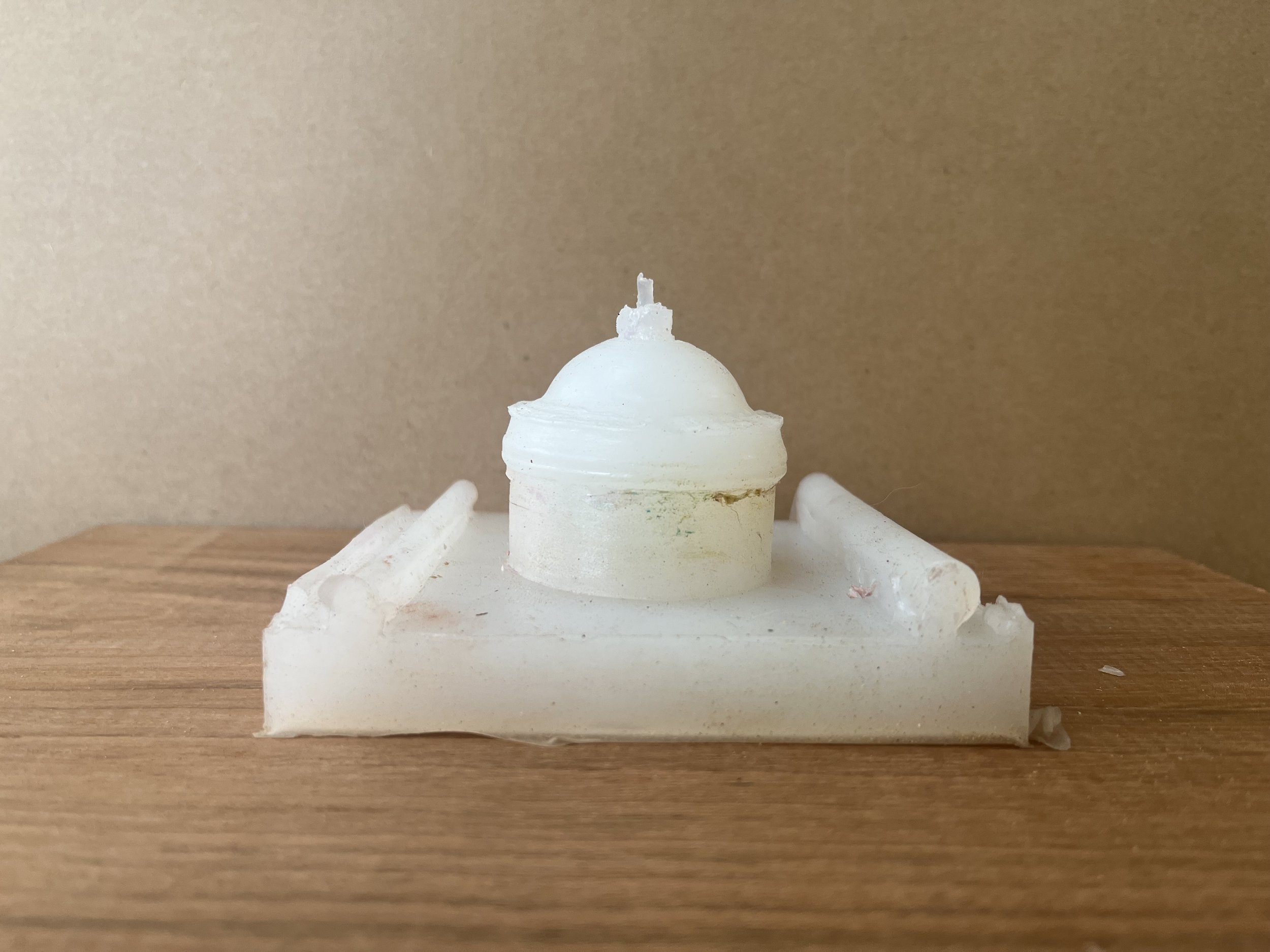Manufacturing the container
Over the past six months, our team has focused on developing manufacturing processes to achieve the desired structural and aesthetic qualities for the components that will make up the nectar distribution containers. Each container comprises 11 precision parts using materials including silicone, glass, aluminum, resin, steel, and rubber.
Here we’ll walk you through some of the processes we’ve developed, their outcomes, and the steps that are still in progress.
Bee-centric Color
We worked with artist and designer Adrienne Hapanowicz to design color schemes that explore how we can use our understanding of bee vision to assist them in the proper use of the nectar distribution containers.





Silicone Casting
The silicone casting process is started by 3D-printing each part in Terrafilum bio-plastic. The pieces are then coated with Smooth-on XTC-3D, which fills in the inconsistencies between layers of filament. After the XTC-3D has cured for 24 hours, the coating is sanded with 180, 220, and 400-grit wet sandpaper to reach a smooth satin finish.
Molds are poured using Mold Star 20T due to the material’s strength and flexibility. It allows us numerous casts before needing to remake the mold.
Inside the molds, we hand-paint a layer of Cast Magic powder to achieve an iridescent surface and patterns. When the silicone is cast, it is embedded into the surface so it won’t deteriorate over time. We inject the molds with degassed Sorta-Clear 37 using a jello-shot syringe to push the material into all corners of the mold.
Glass mold-blown container
Each element of the nectar distribution container must be precise, including the glass body. We are in the process of producing a glass blow mold to ensure all pieces are consistent. Green hardwood is milled using a CNC machine to create an inverted half of the final form. The two halves will be hinged together to create a simple mold that can be closed, blown, and opened to release the part. Also, we’ve added a small bubble zone to the top and bottom of the form where the glass will be cut, transforming it from a bubble to a cylinder with two open ends. Some images of example molds have been included for the curious.






















